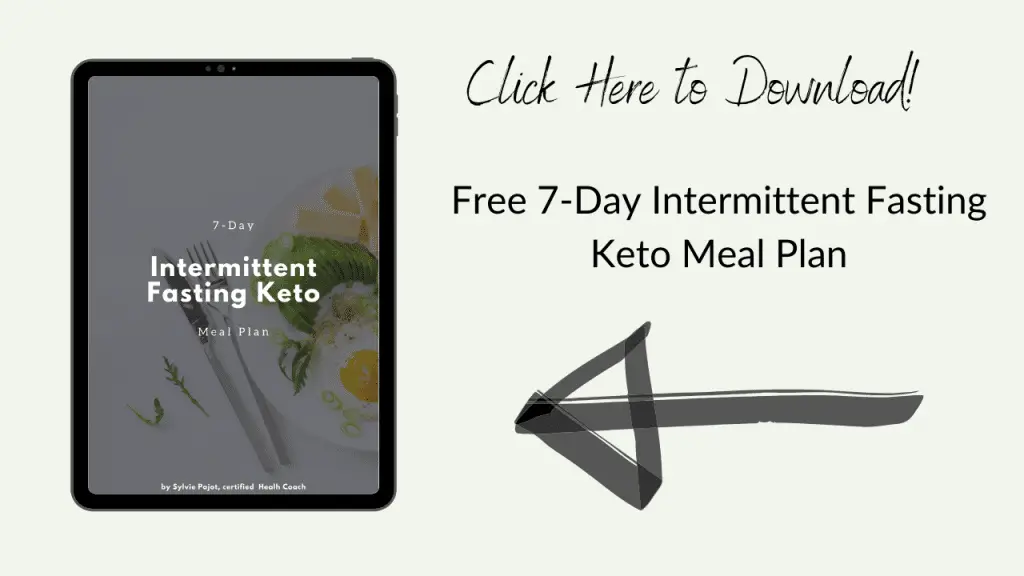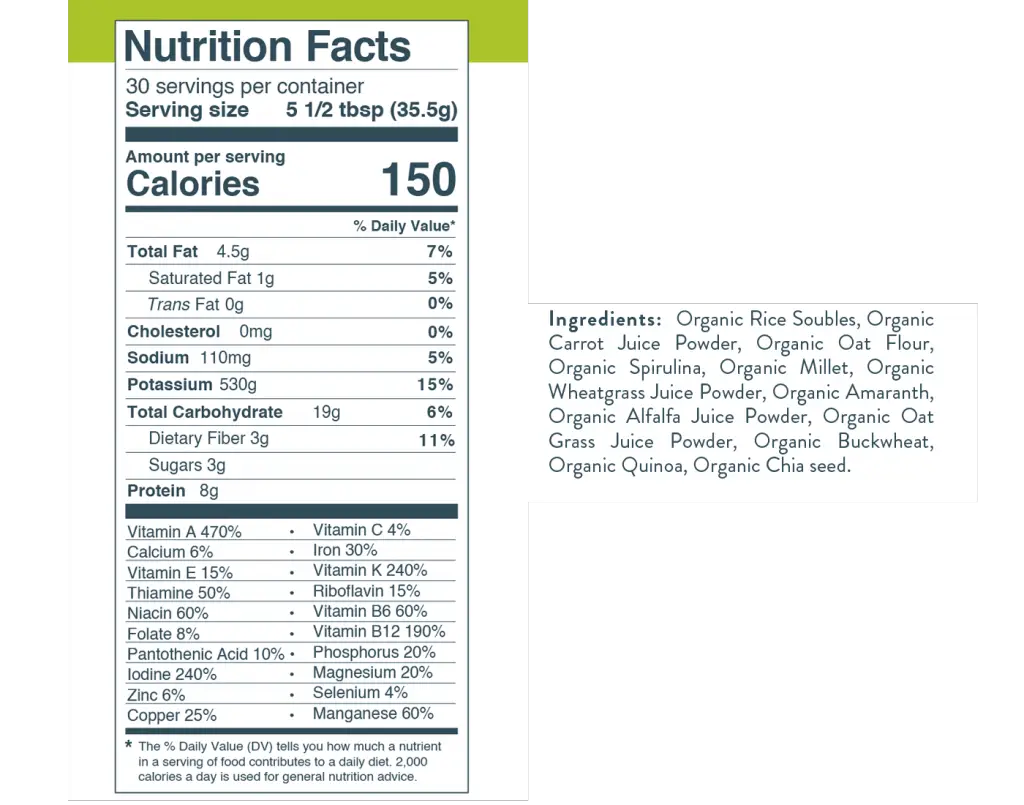I started experimenting with intermittent fasting way back (I was in my thirties), I did the Leangains method (the 16:8 method). I was disappointed by my lack of results and gave up after 2-3 weeks. In my forties, I tried intermittent fasting again. This time, I discovered the Warrior Diet (the 20:4 method). The Warrior Diet was exactly what I needed. I achieved my weight loss and health goals. It took a year, but I lost all the weight I wanted to lose (20 lbs) and I feel better than in my twenties (no kidding)! In this post, I am going to tell you everything you need to know about the warrior diet so you can try it for yourself.
Intermittent Fasting for Fat Loss
When I first tried intermittent fasting in my thirties, I didn’t think it was for me. I was getting headaches (I thought maybe from the caffeine without food) and I wasn’t losing weight.
A few years later, I gave it another try. This time, I didn’t experience headaches, and I did lose a bit of weight, but not much. I regained it back as soon as I started eating breakfast again (I was following a plan that phased intermittent fasting) still using the 16:8 method.
After turning 40, my inability to lose weight became even more of an issue. If I ate until I was full, I would gain weight. If I made sure I was hungry at least some of the time, I maintained my weight. I just couldn’t lose weight! That’s until I started doing the fasting mimicking diet once a month.
The first time I did the fasting mimicking diet, I lost a few pounds and gained them back within a few days after going back to normal eating after the 5-day period. However, what I discovered is that I started losing weight again during the rest of the month even though I was eating normally again. With this boost of confidence, I started experimenting with other forms of intermittent fasting during the rest of the month. Before that, I didn’t realize that intermittent fasting wasn’t just about skipping breakfast!

Forms of Intermittent Fasting
I alternated between the following intermittent fasting methods for a few months:
- Eat-Stop-Eat: The eat-stop-eat method is about abstaining completely from food for 24 hours before resuming your normal eating. For best results, fast for 24 hours at least twice a week.
- The 5:2 method: The 5:2 method is similar, but you can eat up to 500 calories on your fasting days.
These two intermittent fasting methods and the fasting mimicking diet together allowed me to lose about 10 lbs without feeling like I had to starve myself and without feeling too deprived. It was amazing! I also found I felt more satisfied with my meals, didn’t crave foods as much. At the five-month mark or so, I felt the need to switch things up a bit. I wanted to lose weight faster and I felt able to go without food for longer. That’s when I naturally started implementing the warrior diet.

How Intermittent Fasting Helps You Lose Weight
Most of the research on intermittent fasting is done on lab rats, but it shows promising results like:
- Weight loss
- Improved blood pressure
- Decreased blood sugar levels
- Improved cholesterol levels
- Increased longevity
A continuous calorie restriction of around 20% shows the same results, but with the important drawback that the rats get “hangry”. The same thing happens to humans as I am sure you are aware of if you went on a diet for any length of time. The advantage of intermittent fasting over constant calorie restriction is the sense of satisfaction that comes from the ability to eat until you are satisfied during your feeding window. Moreover, alternating through cycles of feasting and famine is deeply embedded in our cellular makeup. It allows your body to start producing ketones for fuel, which increases longevity, and a decreased incidence of diseases, including cancer and obesity.
Lastly, as this study shows, intermittent tends to decrease your appetite in the long run. This is the key to weight loss success! Instead of feeling hungrier and hungrier, you will feel content with less food.

What is the Warrior Diet?
The warrior diet is simply a fancy name for a longer 20-hour fasting window. The most common intermittent fasting method is the Leangains method or the 16-hour fast. If you practice the warrior diet, you fast for 20 hours and eat during the remaining 4 hours.
There is a whole book about the Warrior Diet that was published in 2001. The author, Ori Hofmekler explains how this feeding window mimics the eating patterns of ancient warriors. As you can see, it isn’t a new concept!
What to Eat While On The Warrior Diet
As with any other type of intermittent fasting, it’s important that you pick foods that will nourish your body during your feeding window. Fasting for a while is no excuse for binging on junk food! Avoid processed foods, eat lots of fruits and vegetables, and include lots of healthy fats in your diet. Many people who practice intermittent fasting also follow a ketogenic diet. If you want to speed up the process of producing ketones to reduce your appetite and improve your longevity, that may be a good option.
Get my free 7-Day Intermittent Fasting Keto Meal plan for faster results.

Warrior Diet Vs. OMAD
You may have heard of OMAD and wonder what the difference is between the OMAD and the Warrior Diet. OMAD stands for One Meal A Day Diet. With the Warrior Diet, you also get one meal, but you may eat other things that are not included in your meal. You may snack during your 4-hour window. With the OMAD, you eat during a one-hour window. You are fasting for 23 hours! I am part of various fasting Facebook groups and I heard a lot of people experiencing issues if going on the OMAD for an extended period. I heard people saying that:
- They couldn’t lose weight anymore after a while (the assumption is that the restriction is too strict and causes the metabolism to slow down).
- They were dizzy and tired.
- They had heart palpitations.
- They didn’t feel satisfied and were craving food.
For most people, one hour is just not long enough to get enough food to provide a reasonable amount of calories, vitamins, and minerals. However, it doesn’t mean that you should never do the OMAD. I just wouldn’t advise you to practice it for an extended period

How I Practice the Warrior Diet
If you would like to try the Warrior Diet, all you need to do is eat whatever whole foods you want to eat during your 4-hour eating window. During your fasting window, stick to water, coffee, or teas.
As for me, I drink a keto coffee when I wake up in the morning. I use coconut milk and sometimes put MCT oil or ghee in it too (I know this is not a clean fast, but it works for me).
I start eating at 4 pm by drinking a Power Shake. I have mentioned the Power Shake before. I drink it every day and I include it in most of my fasting mimicking diet plans.
The Power Shake is a green superfood powder that provides tons of vitamins and minerals. It is made of organic and raw ingredients that have been dehydrated at a temperature of 80F. It will boost your body with tons of iodine, vitamin A, vitamin B12 and more. I have so much more energy since taking this product!

Between 5-6 pm, I eat a full dinner. Usually, I have a large salad filled with healthy fats like avocado, hemp hearts, olives, goat feta and whatever vegetables I have on hand. I eat a clean protein, sometimes I eat potatoes, rice, gluten-free pasta or whatever the whole family is having.
Then, around 7 or 7:30 pm, I eat something else. Sometimes it’s a smoothie, or sometimes it’s Paleo cookies I make. Whatever I feel like having. I stop eating at 8 pm.
Lastly, every weekend, I allow myself to eat lunch and often breakfast. Basically, I take the weekends off!
My Warrior Fasting Results
The main reason I wanted to write about the Warrior Diet is because of the results I have been able to get from my warrior fasting efforts. After 5-6 months of the fasting mimicking diet and various other intermittent fasting methods, my weight loss was becoming stagnant. The warrior diet has allowed me to lose the remaining weight. It has also become a way of life. Even though I don’t fast for 20 hours as often now because I no longer want to lose weight, I still do it once or twice a week because of the way it makes me feel. Read more about my Warrior Diet Results here.
Warrior Method Fasting Video
In Summary
There are many approaches to choose from when it comes to intermittent fasting. There is no perfect way to practice it and there is no one approach that will necessarily work forever. When it comes to intermittent fasting, I recommend you stay flexible and mix things up. Particularly if you are a woman. Most women benefit from going through cycles of feasting and fasting (to a greater extent than just within a day). Read more about How Intermittent Fasting Affects Women’s Hormones.






